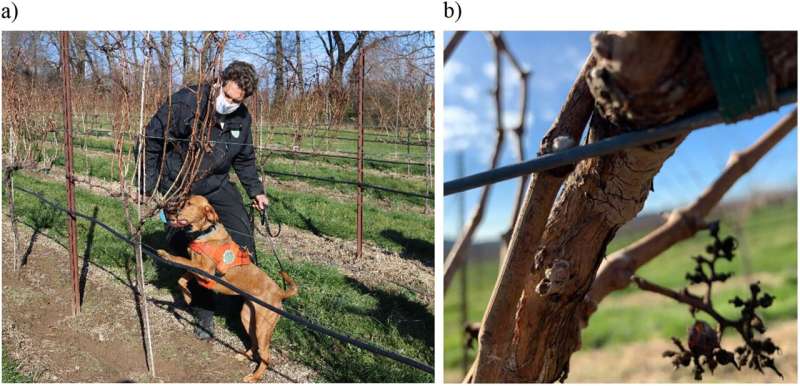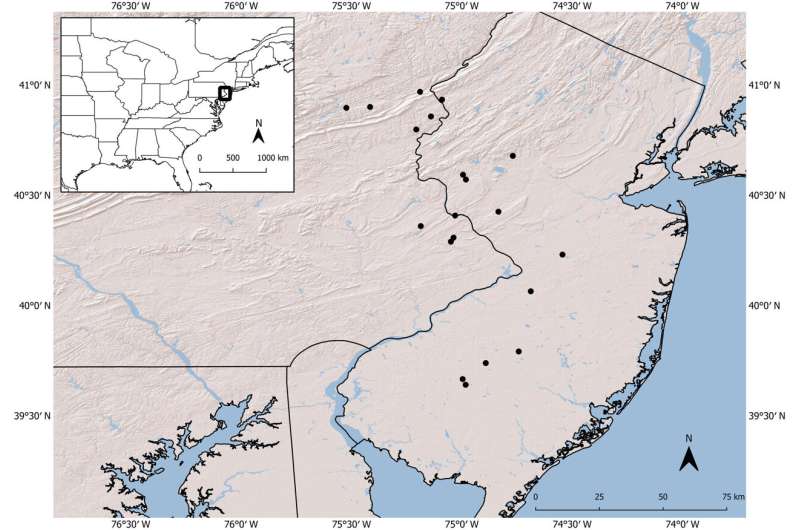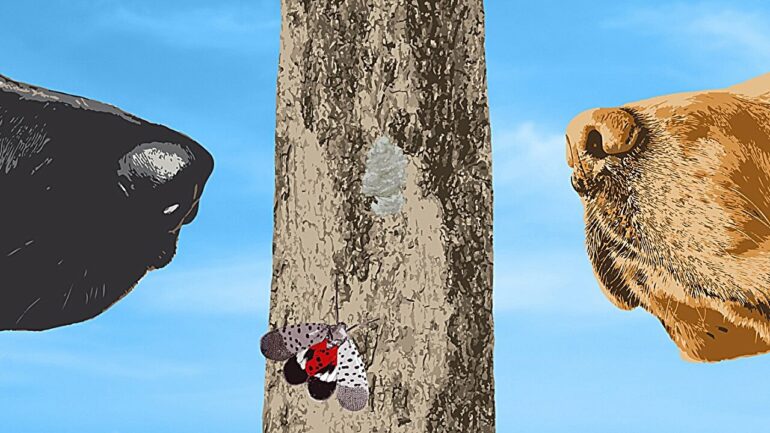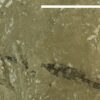Growers and conservationists have a new weapon to detect invasive spotted lanternflies early and limit their spread: dogs trained to sniff out egg masses that overwinter in vineyards and forests.
A study, published in the journal Ecosphere, found that trained dogs—a Labrador retriever and a Belgian Malinois—were better than humans at detecting egg masses in forested areas near vineyards, while people spotted them better than the dogs in vineyards.
To improve early detection and rapid response—the most effective strategy for controlling the pest after it invades an area—growers, conservationists and land managers might supplement human surveys with trained detection dogs.
The spotted lanternfly, which was first detected in Pennsylvania in 2014, has since spread to 18 other states, including New York, where the invasive, destructive insect feeds on and kills a wide range of woody host plants, including grapes, apples, hops, and maple and walnut trees.
“A spotted lanternfly infestation in a vineyard can cause 80% to 100% mortality of the vines in one growing season,” said Angela Fuller, the paper’s corresponding author and professor in the Department of Natural Resources and the Environment in the College of Agriculture and Life Sciences, and leader of the New York Cooperative Fish and Wildlife Research Unit.
Infestations also increase the amount of insecticide that growers need to use, which can increase costs by up to 170% in a growing season, Fuller said.
The two dogs were trained to detect the scent of spotted lanternfly egg masses by professional trainers at the New York-New Jersey Trail Conference and Working Dogs for Conservation. In years past, the teams have trained dogs to detect other invasive insects, plants and pathogens.

(a) Detection dog and handler and co-author J. Beese searching a vineyard transect for spotted lanternfly (Lycorma delicatula) egg masses, showing vines and metal support poles. (b) Spotted lanternfly egg mass on the underside of a grape vine. © Angela Fuller, Ecosphere (2024). DOI: 10.1002/ecs2.70113
In the study, designed to compare how well humans and dogs can detect the pest’s eggs when they overwinter, Fuller and colleagues chose 20 vineyards in Pennsylvania and New Jersey known to have lanternfly infestations. They then mapped out transects along vineyard rows and in adjacent forests. Humans surveyed for egg masses one day, while leashed dogs with a human handler scanned the same transects on separate days, so human scents didn’t influence the dogs.
People detected 1.8 times more egg masses than dogs in vineyards, where female adult lanternflies lay eggs on vines and support poles. “It was pretty easy for humans to see them, because they can do a systematic search, up and down a vine or pole,” Fuller said.
Dogs searched more randomly in the vineyards, which made their surveys by smell less systematic and effective. Humans found 31 egg masses per hour versus 24 egg masses per hour for dogs.
In adjacent forests, where many spotted lanternflies overwinter and then emerge to infect vineyards, dogs had 3.4 times more detections than humans. “The dogs find egg masses by smell,” Fuller said. “So, in a very complex environment, it’s easier for a dog to smell something than it is for a human to see something that is small and cryptic.”
Discover the latest in science, tech, and space with over 100,000 subscribers who rely on Phys.org for daily insights.
Sign up for our free newsletter and get updates on breakthroughs,
innovations, and research that matter—daily or weekly.
In addition to doing well in complex environments, the dogs do well in situations where the scent isn’t everywhere and the target is found in low densities, before lanternflies have spread throughout an area. In forests, dogs found 7.6 egg masses per hour versus 6.7 per hour for humans.

Location of 20 vineyards surveyed for spotted lanternfly (Lycorma delicatula) egg masses in Pennsylvania and New Jersey, USA, during winter/early spring 2020–2021. Locations are denoted by black dots. © Ecosphere (2024). DOI: 10.1002/ecs2.70113
One caveat: The dogs spent more time searching than humans, so overall, dogs found many more egg masses than humans in forests. “The extra time that dogs take to find them is not as important as it is to find them in the first place, because you need to detect the egg masses in order to eradicate them,” Fuller said.
In other findings, the researchers used a computer model to estimate occupancy rates—the probability that a particular area has the spotted lanternfly. They found that occupancy was higher in the vineyards than in the forests, and higher on metal poles than on vines.
Also, the transects in the vineyards that were closest to a forest had a higher occupancy than those that were farther away from the forest. This is likely because lanternflies don’t disperse very far, and often fall out of trees or are carried by wind.
“If you’re searching in a vineyard close to the forest, that’s more likely where they’re going to be,” Fuller said.
More information:
Angela K. Fuller et al, Effectiveness of canine‐assisted surveillance and human searches for early detection of invasive spotted lanternfly, Ecosphere (2024). DOI: 10.1002/ecs2.70113
Provided by
Cornell University
Citation:
Dogs sniff out devastating spotted lanternflies for early detection (2025, January 2)



